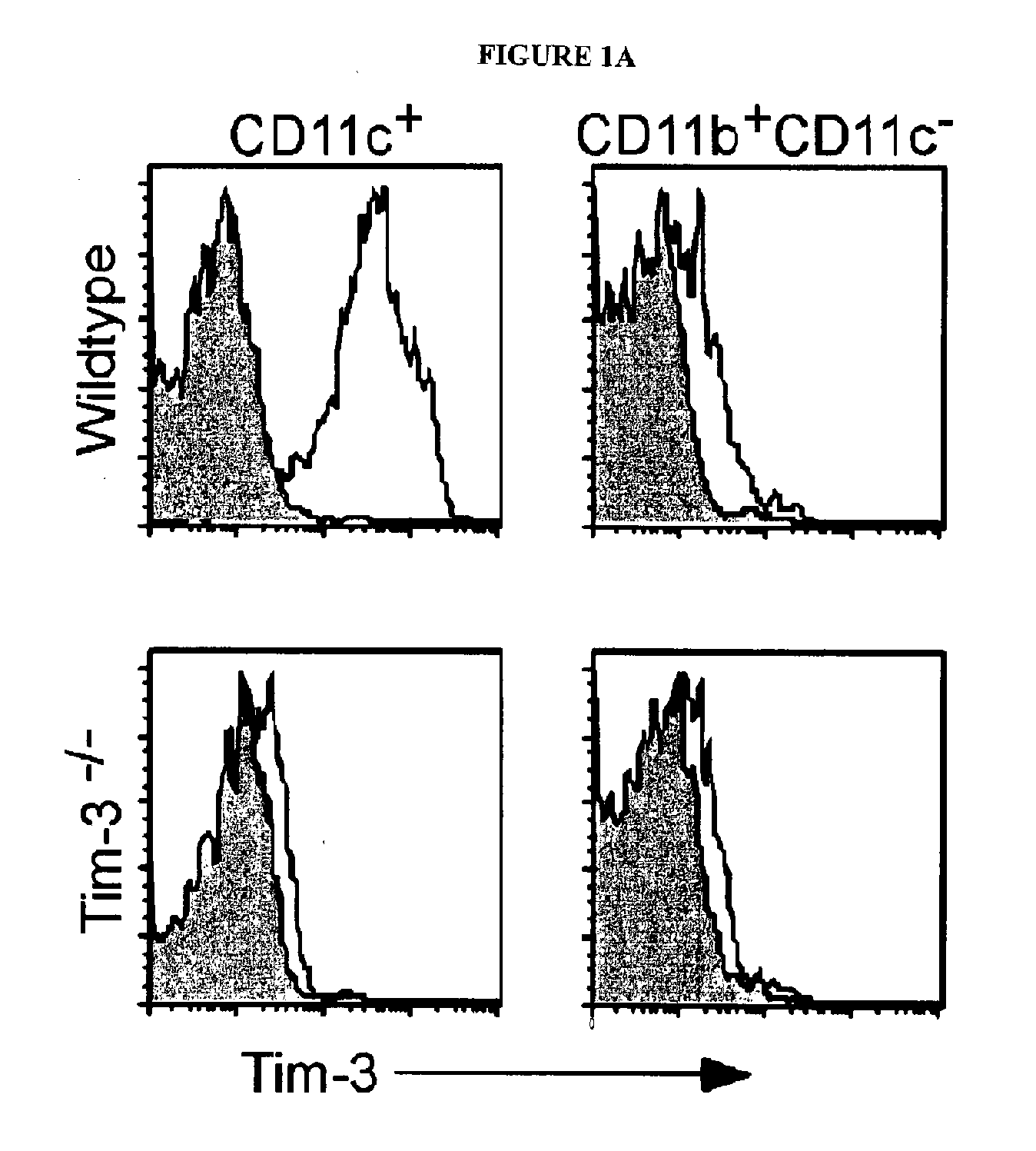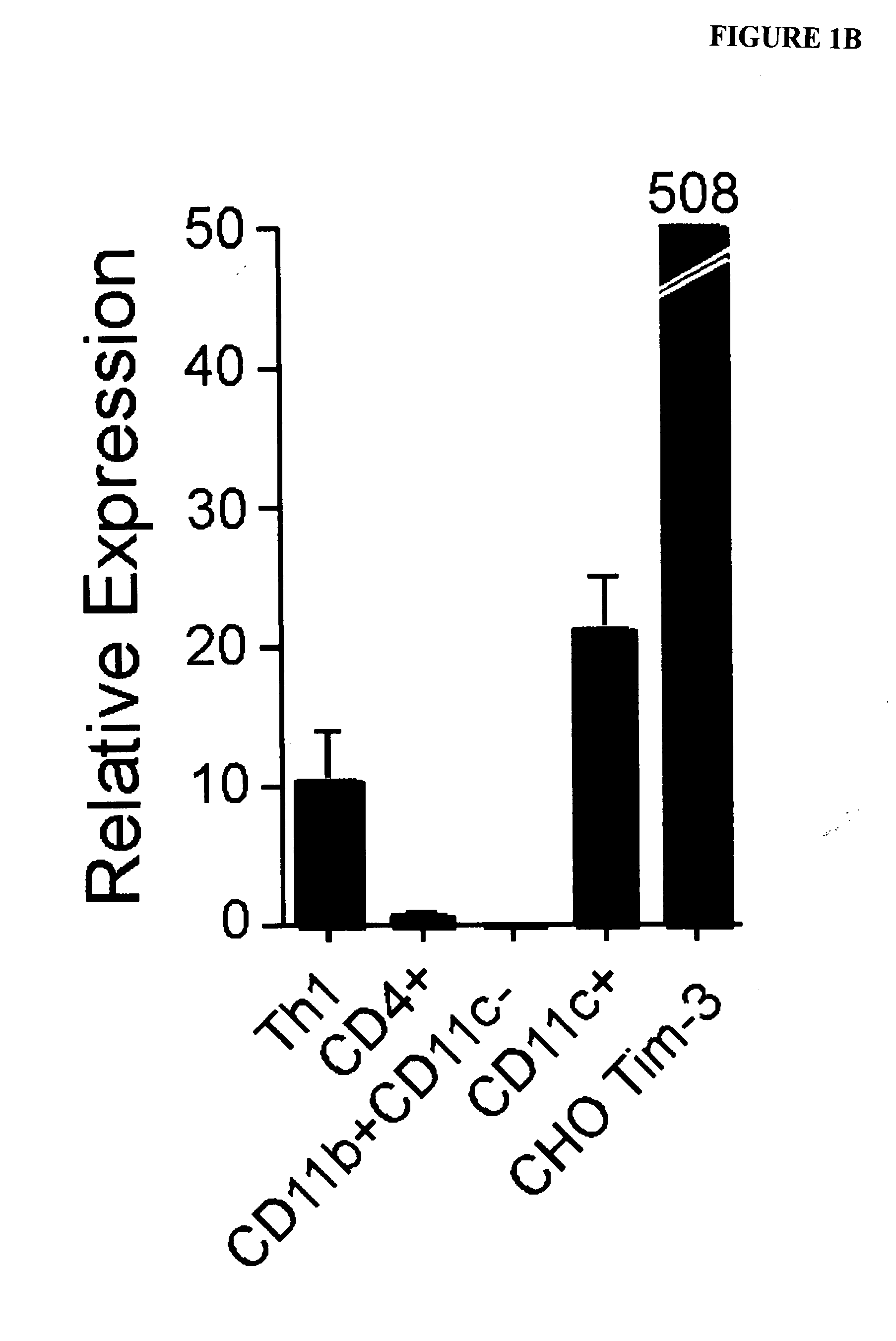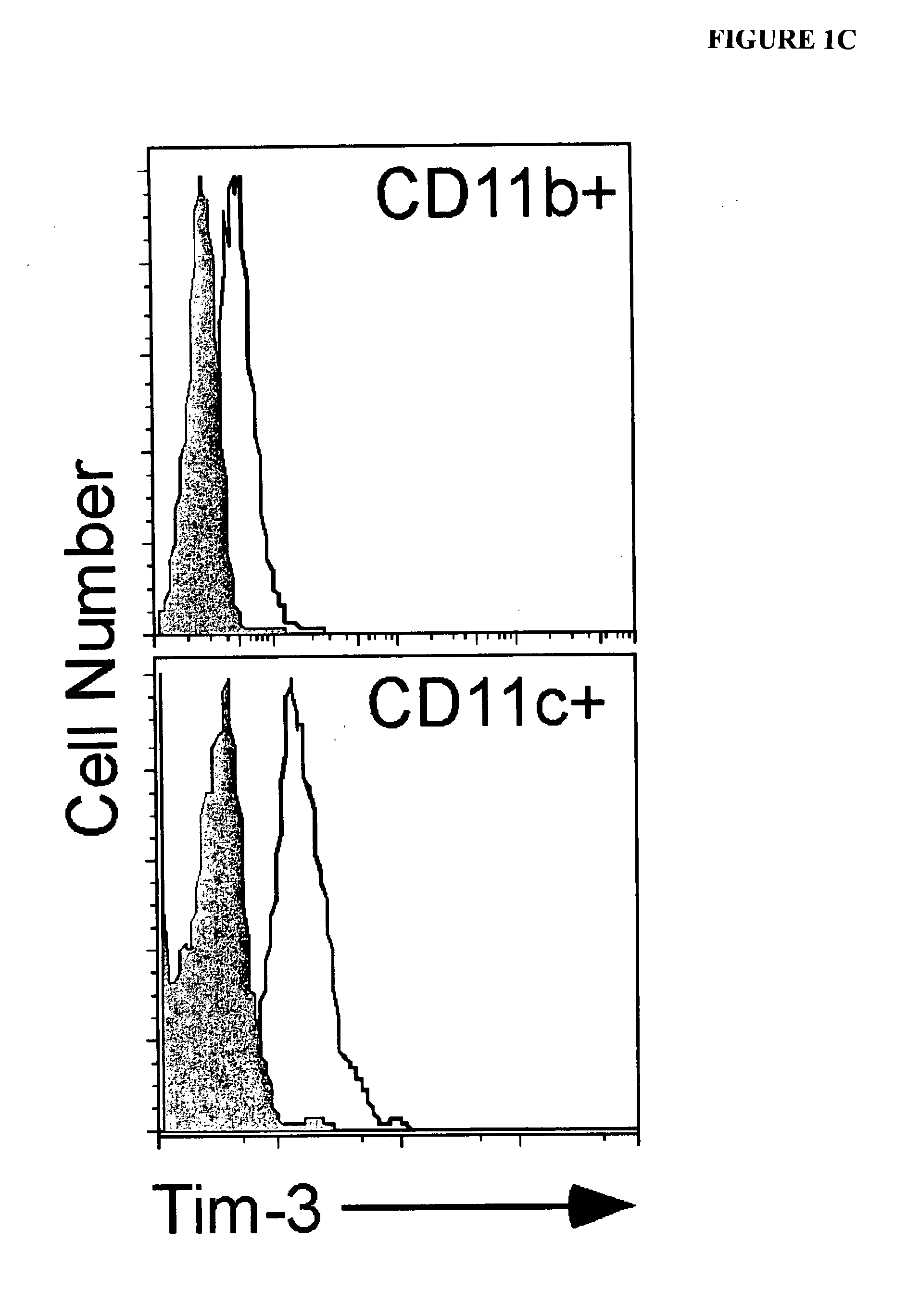Therapeutic uses of tim-3 modulators
a technology of tim3 and tim-3, which is applied in the field of therapeutic use of tim3 modulators, can solve the problems of no longer being remyelinated, progressive neurodegeneration, no known cure for ms, etc., and achieve the effects of increasing tim-3 activity, enhancing tnf-a secretion, and increasing tim-3 activity
- Summary
- Abstract
- Description
- Claims
- Application Information
AI Technical Summary
Benefits of technology
Problems solved by technology
Method used
Image
Examples
examples
Methods
[0302]Single cell suspension from collagenase treated spleens were stained with the following antibodies: anti-CD11b, anti-CD11c, anti-TIM-3 (EBioscience) and Rat IgG1 isotype control (BD Biosciences). All data were collected on a FACSCalibur (BD Biosciences) and analyzed with FlowJo software (Tree Star).
Real-Time Quantitative PCR
[0303]Total RNA was prepared from sorted cell populations using Trizol (Invitrogen) followed by RNA clean-up and DNaseI digestion (Qiagen). RNA was then reverse transcribed to cDNA and used as template in quantitative RT-PCR using the Taqman system (Applied Biosystems). Primers and probes for detection of full-length mouse TIM-3 were designed in the mucin domain. Sequences were as follows: Probe, 5′-AGA CAC TGG TGA CCC TCC ATA ATA ACA ATG GAA-3′ (SEQ ID NO:7); Forward primer, 5-CGG AGA GAA ATG GTT CAG AGA CA-3′ (SEQ ID NO:8); Reverse primer, 5-TTC ATC AGC CCA TGT GGA AAT-3′ (SEQ ID NO:9). GAPDH primers and probes were purchased from App...
example 1
[0312]The expression of TIM-3 mRNA and protein in macrophages and myeloid dendritic cells (DCs) was examined. Murine macrophages (CD11b+CD11c−) did not express TIM-3, while nearly all CD11c+DCs expressed high levels of TIM-3 directly ex vivo (FIG. 1A). The staining of TIM-3 on DCs was specific, as no staining was observed on CD11c+ cells from TIM-3− / − mice. The expression of TIM-3 on lymphoid (CD8+), myeloid (CD11b+), and plasmacytoid (B220+) DCs was also examined. TIM-3 was equally expressed on all subsets. TIM-3 was expressed at similar levels on immature versus mature bone marrow derived DCs.
example 2
[0313]Pure populations of both macrophages and dendritic cells were isolated by cell sorting, and examined for TIM-3 mRNA by quantitative RT-PCR. mRNA from ex vivo sorted CD4+ T cells, an activated Th1 T cell clone and CHO TIM-3 transfectants were used as controls. In agreement with the flow cytometry data, TIM-3 mRNA was present at high levels in dendritic cells and absent in macrophages (FIG. 1B).
PUM
| Property | Measurement | Unit |
|---|---|---|
| Fraction | aaaaa | aaaaa |
| Immunogenicity | aaaaa | aaaaa |
| Level | aaaaa | aaaaa |
Abstract
Description
Claims
Application Information
 Login to View More
Login to View More - R&D
- Intellectual Property
- Life Sciences
- Materials
- Tech Scout
- Unparalleled Data Quality
- Higher Quality Content
- 60% Fewer Hallucinations
Browse by: Latest US Patents, China's latest patents, Technical Efficacy Thesaurus, Application Domain, Technology Topic, Popular Technical Reports.
© 2025 PatSnap. All rights reserved.Legal|Privacy policy|Modern Slavery Act Transparency Statement|Sitemap|About US| Contact US: help@patsnap.com



